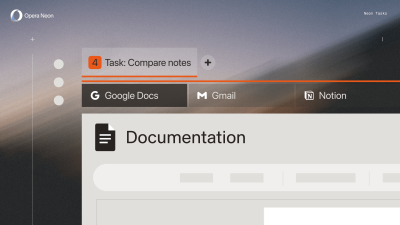Layernext
Computer vision dataset curation, labeling, and search.
data analysis analytics visualizations searchTool Information
| Primary Task | Data analysis |
|---|---|
| Category | data-and-analytics |
| Sub Categories | data-analysis data-visualization research-tools |
| Country | United States |
LayerNext is an AI data infrastructure tool specifically designed for computer vision (CV) projects. It enables AI teams to efficiently collect, curate, label, and search large-scale CV datasets. With LayerNext, users can organize and manage their training datasets with version control, making it easier to develop and iterate on models.One of the key features of LayerNext is its DataLake, which serves as a unified repository for all AI data. This includes raw images and videos, curated data, ground truth, and model outcomes. The DataLake provides a built-in viewer, allowing users to visualize their data in one place and easily search and explore it.LayerNext also offers annotation tools through its Annotation Studio, allowing users to label image and video data at scale. The platform includes built-in analytic tools to help analyze the effectiveness of training data, identify data gaps, and address model and label errors.The tool emphasizes collaboration and integration, offering SDKs and APIs for seamless integration with other computer vision applications and services. It also provides specialized apps for processes such as curation and annotation, allowing for streamlined workflows.LayerNext is self-hosted by default, providing users with control over their data and ensuring compliance with regulations such as HIPAA and GDPR. The flexibility and security of LayerNext make it suitable for various industries, including retail, agriculture, healthcare, and construction.Overall, LayerNext aims to enhance AI team productivity and collaboration by providing purpose-built data tools and automated workflows for computer vision projects. Its user-friendly interface and comprehensive features simplify the CV workflow and enable teams to focus on the core aspects of their AI projects.
LayerNext is the AI-Powered Strategic Intelligence platform.
At LayerNext, our mission is to help organizations achieve their business objectives by making fact-driven decisions and eliminating guesswork. We remove the barriers between data and decision-makers by delivering impactful and actionable insights directly to their fingertips.
LayerNext goes beyond traditional BI tools by proactively surfacing insights from internal data sources, empowering teams to make real-time, data-driven decisions. With seamless integration into existing data infrastructures like cloud data warehouses and DataLakes, LayerNext provides an intuitive, natural language interface that makes interacting with data effortless, ensuring insights are accessible to every stakeholder.
Our platform is designed to simplify complex data analysis and generate insights that align with your business goals. From finance to healthcare, leading organizations trust LayerNext to unlock the full potential of their data and drive business growth.
Experience the future of strategic intelligence with LayerNext.
| Pros |
|---|
|
| Cons |
|---|
|
Frequently Asked Questions
1. What is LayerNext?
LayerNext is an end-to-end AI data management platform designed for computer vision projects. It enables AI teams to efficiently collect, curate, label, and search large-scale computer vision datasets.
2. What are the key features of LayerNext?
The key features of LayerNext include the DataLake, an Annotation Studio, a Dataset Manager, and various built-in analytical tools. It also provides dedicated specialized apps for processes such as dataset curation and annotation, and offers SDKs and APIs for integration with other applications and services.
3. What is the function of the DataLake in LayerNext?
The DataLake in LayerNext is a unified repository for all AI data, including raw images and videos, curated data, ground truth, and model outcomes. It also comes with a built-in viewer for data visualization and search capabilities.
4. Can I visualize my data with LayerNext?
Yes, you can visualize your data in LayerNext. The DataLake provides a built-in viewer that allows you to visualize all your data in one place.
5. How does annotation work in LayerNext?
Annotation in LayerNext is handled through the Annotation Studio. This feature allows users to label image and video data at scale.
6. Does LayerNext offer any analytic tools?
Yes, LayerNext offers built-in analytic tools. These tools assist in analyzing the effectiveness of your training data, identifying data gaps, and correcting model and label errors.
7. Can I integrate LayerNext with other computer vision applications?
Yes, LayerNext can be integrated with other computer vision applications and services. This is facilitated through its provided SDKs and APIs.
8. Is LayerNext self-hosted by default?
Yes, LayerNext is self-hosted by default. This gives users control over their data and ensures compliance with various regulations.
9. Does LayerNext comply with HIPAA and GDPR regulations?
Yes, LayerNext complies with HIPAA and GDPR regulations. Being self-hosted by default, it allows users to control their data, which aids in compliance with such regulatory requirements.
10. Which industries can benefit from using LayerNext?
Industries that can benefit from using LayerNext include retail, agriculture, healthcare, and construction.
11. How does LayerNext enhance team productivity and collaboration?
LayerNext enhances team productivity and collaboration by providing purpose-built data tools and automated workflows for computer vision projects. Its comprehensive features and user-friendly interface aim to simplify the workflow and enable teams to focus on the core aspects of their AI projects.
12. How can I manage my training datasets with LayerNext?
With LayerNext, you can manage your training datasets using the Dataset Manager feature. This allows for efficient organization and version control of datasets.
13. Does LayerNext offer any SDKs or APIs?
Yes, LayerNext does offer SDKs or APIs. These are provided to enable seamless integration with other computer vision applications and services.
14. Can I label images and video data at scale with LayerNext?
Yes, you can label images and video data at scale with LayerNext. This is achieved using the Annotation Studio feature of the tool.
15. Can LayerNext help to identify data gaps and label errors?
Yes, LayerNext can assist in identifying data gaps and label errors. This is possible through its built-in analytic tools which help understand the effectiveness of training data and debug model and label errors.
16. What are the benefits of using LayerNext for computer vision projects?
The benefits of using LayerNext for computer vision projects include simplification of data management, efficient dataset organization, seamless integration with other services, and automation of workflows. It also provides data security by being self-hosted, and complies with regulatory standards such as HIPAA and GDPR.
17. What is the Community version of LayerNext?
The community version of LayerNext is a recently launched feature. However, further details about this version are not explicitly provided on the website.
18. Can I customize LayerNext according to my workflow?
Yes, you can customize LayerNext to align with your unique workflow. This flexibility further enables seamless integration with other AI tools.
19. How does LayerNext ensure data security?
LayerNext ensures data security by being self-hosted by default. This means your data is kept inside your infrastructure, preventing risk of data leaving your security and privacy boundaries.
20. Does LayerNext offer tools for dataset curation and annotation?
Yes, LayerNext provides tools for dataset curation and annotation. These include specialized apps dedicated to dataset curation and the Annotation Studio for efficient data labeling at scale.
Comments
Similar Tools
Related News

The digital landscape is in constant flux, with technological advancements continually reshaping how we interact with the inter...
@devadigax | Sep 30, 2025

Redmond, WA – In a move set to redefine workplace productivity, Microsoft has officially launched a groundbreaking new feature,...
@devadigax | Sep 29, 2025

Nine months after its initial integration into Google Sheets, Gemini AI has taken a significant leap forward, moving beyond tex...
@devadigax | Sep 25, 2025

In a significant move poised to accelerate global AI adoption, Google has officially rolled out its more affordable AI Plus pla...
@devadigax | Sep 24, 2025

Smart thermostat manufacturer Tado is rolling out a significant update to its platform, leveraging the power of artificial int...
@devadigax | Sep 23, 2025

The fitness industry is awash in subscription services, each promising personalized insights and enhanced tracking capabilities...
@devadigax | Sep 22, 2025
 AI Tool Buzz
AI Tool Buzz